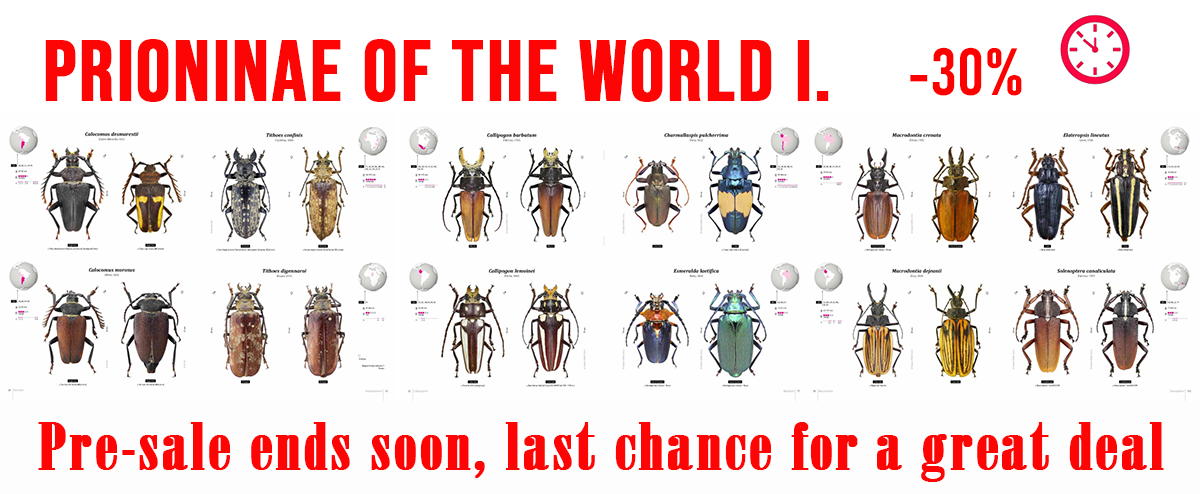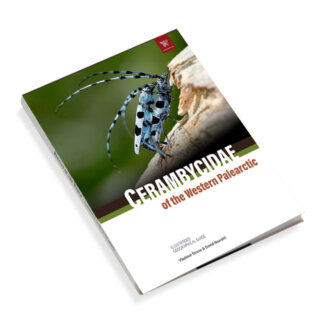Lamiinae is a large subfamily of longhorn beetles (family Cerambycidae), commonly known as flat-faced longhorns due to the characteristic flattened appearance of their faces.
Book novelties:
Prioninae of the World I.
Cerambycidae of the Western Paleartic I.
This subfamily includes over 750 genera, making it one of the most diverse groups within Cerambycidae, second only to the subfamily Cerambycinae.
Lamiinae
Key Characteristics of Lamiinae:
Appearance: Adults typically have a flat-faced profile with antennal sockets located on low tubercles on the face.
Diversity: Over 750 genera worldwide, with a particularly high diversity in the Oriental region and Southeast Asia.
Larvae: Xylophagous (wood-eating) and phytophagous (plant-eating), developing inside plant tissues such as stems, trunks, or roots.
Ecology: Most species prefer freshly cut logs, weakened, or dying trees, though a few attack living trees. They play important roles in forest ecosystems by decomposing wood and sometimes act as pollinators.
Economic Impact: Some species are serious pests of forests, plantations, and timber, causing damage to living trees and construction wood.
Taxonomy:
Family: Cerambycidae (longhorn beetles)
Subfamily: Lamiinae (flat-faced longhorns)
Tribe example: Lamiini, a large tribe within Lamiinae
Distribution:
Found worldwide, with especially rich diversity in tropical and subtropical regions.
Many species are poorly known or undescribed, especially in Southeast Asia and Papua Indonesia.
Behavior and Diet:
Adults of many Lamiinae feed on nectar, pollen, fruit, sap, or bark.
Larvae bore into wood, often targeting stressed or recently dead trees.
Some species use chemical cues like plant volatiles or bark beetle pheromones to locate hosts.
In summary, Lamiinae is a highly diverse and ecologically significant subfamily of longhorn beetles characterized by their flat faces, wood-boring larvae, and wide distribution, with many species important both ecologically and economically.



